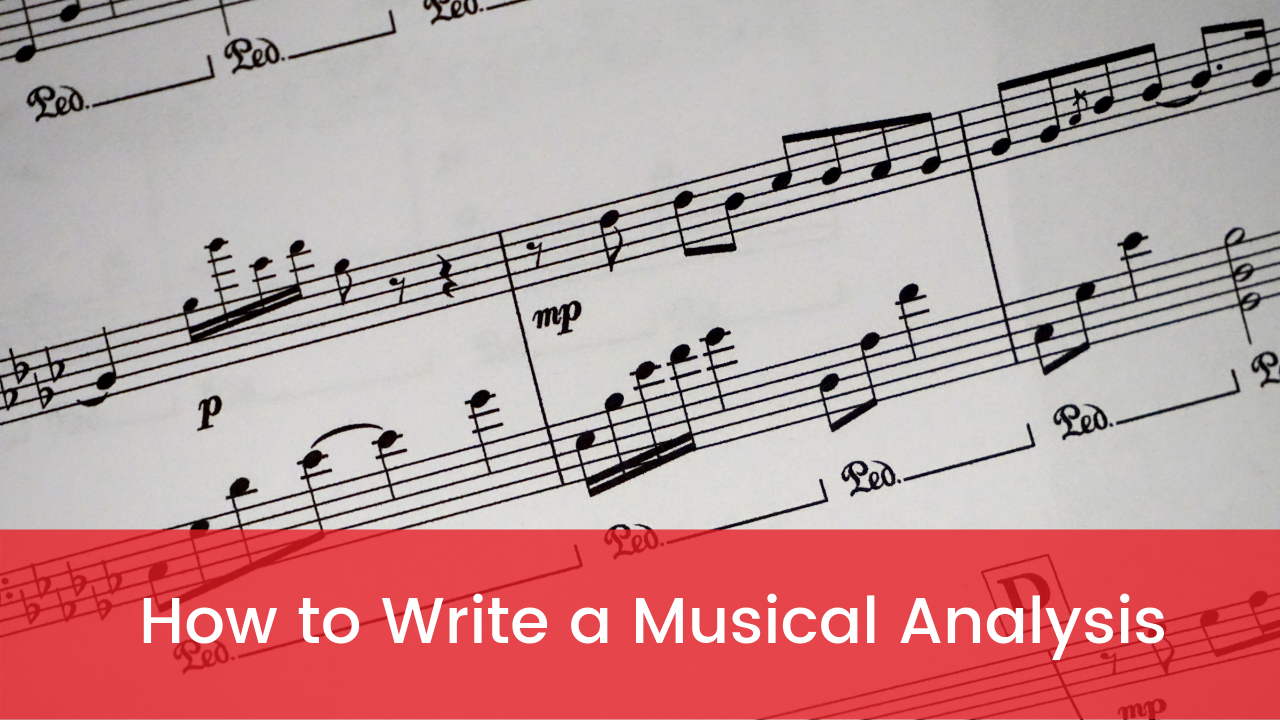How to Write a Music Analysis

Things to consider when writing a musical analysis
First of all, describe the following elements of music:
- Key
- Meter
- Tempo
- Instrumentation
- Form
Melody
- Describe the introduction?
- Does it move in leaps or steps?
- Is the melody legato (smooth) or staccato-like (short and detached)?
- Describe the approximate range – narrow or wide?
- Is it motivic or lyrical?
- Identify and describe sequences as ascending or descending, tonal or real.
- List other composition devices such as arpeggios, leaps, repeated notes, imitation?
Harmony/Tonality
- Name the key or tonal center, i.e. major, minor, modal, atonal or polytonal?
- Identify all keys used and how they related to each other – if at all?
- Identify chromatic chords, state where they occur and name them?
- Does it have treatment and resolution of dissonance, any unresolved dissonance?
- Specify the cadence points.
- Discuss the harmonic rhythm. Is it consistent, or does it change?
Rhythm/Meter
- Name and explain the meter
- Do parts play the same rhythm or different rhythmic patterns?
- Describe any irregular meters and time changes?
- Identify and describe rhythmic contrasts or cross-rhythms.
- Are the note values all very similar or constantly changing?
- Is there a simple rhythmic pattern such as one note per beat, or is it more complex?
- Describe if and how rhythm develops – or is there a repeated rhythmic motive
Instrumentation
- Name the instruments and voice types used?
- At what point do instruments/voices enter?
- Can you hear one or more solo instruments in the work?
- What role do the various instruments play? (Are they all playing the same thing, or do some play thematic material and others an accompaniment role?)
Timbre/Dynamics
- Describe how the sound is built up?
- Is the use of dynamics unexpected or logical?
- Explain how the dynamics and timbre contribute to the composer’s intention?
Texture
- Name and describe the predominant texture (polyphonic, homophonic, monophonic) or is it a mixture?
- Identify the texture as thick and heavy or thin and light. Describe any texture changes.
Form
- Describe the form of the piece. e.g. binary, ternary, rondo, theme and variation.
- Is it free-flowing, episodic, through-composed or cyclical?
HELPFUL RESOURCES



Looking for more time-saving, engaging resources?
Check out MTR’s collection of music teaching materials - SHOP the MTR Store or our store on TpT.
Would you like more music teaching strategies? Check out these related posts to keep your lessons fresh and interactive!
Blog Post: Teaching Rhythm in Music
Blog Post: 5 Call-and-Response ActivitiesTo Keep Your Music Class Engaged
Blog Post: Benefits of Body Percussion Activities
Blog Post: Energize Your Music Classroom With a Fun Rhythm Reading Game
Blog Post: Teaching Music Notation: Fun and Effective Strategies
Blog Post: Giant Staff Jumping Game: Easy Adaptations for Every Grade Level
Blog Post: Benefits of Color-by-Music Activities
Blog Post: 11 Proven Strategies to Keep Students Engaged During Music Rehearsals
Blog Post: Planning a Successful Lesson
MTR 12-Month Memberships
Save time and inspire your students with a growing collection of music-teaching resources!
Subscribe to one of the MTR 12-Month Memberships for Music Teachers today.
Click HERE for more information!
Sign up to receive the monthly MTR newsletter and gain exclusive access to the
FREE Resource Library for music teachers!



